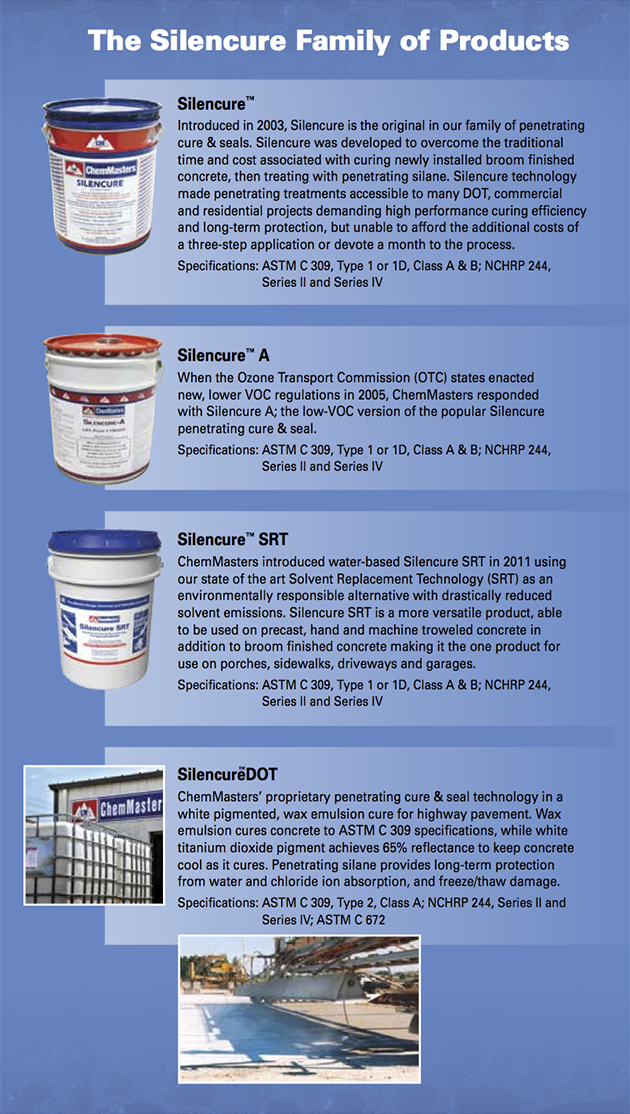 |
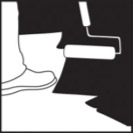 Seal the Deal
Seal the Deal
ChemMasters Newsletter: Vol 1 Issue 7
Protecting Late Season Concrete Pours
In northern climates, concrete that’s poured late in the season does not have much time to mature prior to exposure to damaging freeze/thaw cycles. That’s why surviving the first winter undamaged is often the most critical in the lifespan of newly placed concrete.
Although we like to think of concrete properties as fixed the moment it cures, it does undergo a maturation process, during which it develops its full design strength and durability. Most concrete has very high compressive strength, anywhere from 3,000 psi and beyond. Compressive strength is a measurement of how well it can withstand an external force that wants to compact it, like the weight of a car rolling over a concrete driveway.
But concrete also encounters another force that is much more damaging, and which it is far less capable of enduring. Tensile strength is a measurement of an internal force that wants to tear it apart from the inside. Inflate a balloon and then paint it. Now inflate that balloon some more, and the tensile forces imparted on the paint will cause it to crack.
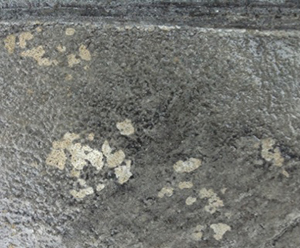
Freeze/thaw cycling and deicing chemicals can cause surface paste to scale or delaminate.
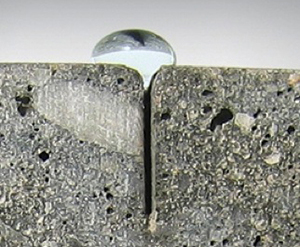
Penetrating silane and siloxane chemistries make concrete water repellant.
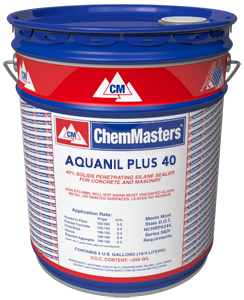 |
Aquanil Plus 40Penetrating Silane Concrete Sealer & Waterproofer |
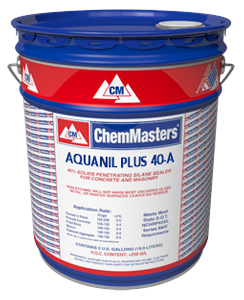 |
Aquanil Plus 40-ALow-VOC, Solvent Based, Penetrating Silane Sealer for Concrete & Masonry |
 |
Aquanil Plus 100Penetrating Silane Sealer for Concrete and Masonry |
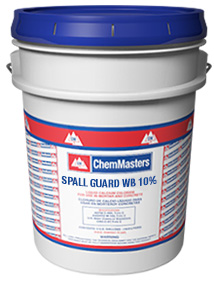 |
Spall Guard WB 10Penetrating Siloxane Low-VOC Water-Based Concrete Sealer & Waterproofer |
Concrete cracks in much the same way during freeze/thaw cycles. Water is absorbed into the concrete where it freezes when the temperature drops. And as anyone who has left a can or bottle of pop in the freezer a bit too long knows, when water freezes it expands. Because concrete has relatively low tensile strength (about 1/10th of is compressive strength), this expansion can cause it to crack. When that crack occurs near the surface, it may become a “pop out” over an absorptive aggregate or cause the top paste to begin scaling or delaminate off the surface.
This damage can be aggravated by the use of deicing chemicals, which cause concrete to undergo additional freeze/thaw cycles as ice is melted and refrozen. Deicing chemicals can also allow concrete to become “super saturated”, and hold more water than it would naturally. And of course, more water means more expansion as it freezes.
Concrete that has not reached full maturity is particularly prone to this kind of freeze/thaw damage. As a result, it’s crucial to provide maximum protection to late season pours. Freeze/thaw damage is best avoided by not allowing water into the concrete in the first place. Penetrating water repellants like silanes and siloxanes do a great job of reacting within the concrete to form a hydrophobic (water repellant) barrier throughout the concrete pores and capillaries. Since they work below the concrete surface, they have the added benefit of not changing its appearance or slip resistance, and last longer because they’re not subject to surface wear and abrasion.
ChemMasters makes a full line of penetrating silane and siloxane water repellants, including Aquanil Plus 40, Aquanil Plus 40-A, Aquanil Plus 100 and Spall Guard WB 10.
Typical penetrating water repellants can only be applied to fully cured concrete, so late season concreting has the added challenge of curing concrete in addition to offering a high performance penetrating silane or siloxane. That’s were ChemMasters patented Silencure technology is unbeatable!
The Silencure family of products are applied to newly placed concrete within two hours of final finish, providing both the necessary curing function along with a long-term silane/siloxane water repellant, providing lasting protection from freeze/thaw cycling and deicing chemicals. One product, one application, with maximum protection to survive that all important first winter.
 Aquanil Plus 40
Aquanil Plus 40
Penetrating Silane Concrete Sealer & Waterproofer
Aquanil™ Plus 40 is a penetrating, chemically-reactive 40% solids alkyltrialkoxy silane, solvent-based silane sealer. It repels moisture and water from concrete and masonry.
 Aquanil Plus 40-A
Aquanil Plus 40-A
Low-VOC, Solvent Based, Penetrating Silane Sealer for Concrete & Masonry
Aquanil Plus 40-A is a penetrating, chemically reactive alkyltrialkoxy, 40% solids, solvent based silane sealer that repels moisture and water from concrete and masonry.
 Aquanil Plus 100
Aquanil Plus 100
Penetrating Silane Sealer for Concrete and Masonry
Aquanil Plus 100 is a penetrating, chemically reactive alkyltrialkoxysilane ›95% solids, solvent based silane sealer that repels moisture and water from concrete and masonry.
 Spall Guard WB 10
Spall Guard WB 10
Penetrating Siloxane Low-VOC Water-Based Concrete Sealer & Waterproofer
SpallGuard WB-10 a penetrating, chemically reactive, solvent-free, silane modifed siloxane emulsion designed to be a moisture and water repellent for concrete and masonry.
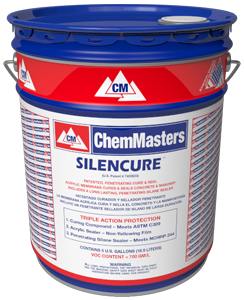 Silencure
Silencure
Penetrating Silane Cure and Seal for Broom Finished Concrete
Silencure™ is a solvent-based, pure acrylic copolymer curing and sealing compound for concrete.
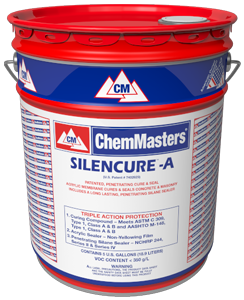 Silencure-A
Silencure-A
Low-VOC Penetrating Silane Cure and Seal for Broom Finished Concrete
Silencure-A is a solvent-based, pure acrylic copolymer curing and sealing compound for concrete.
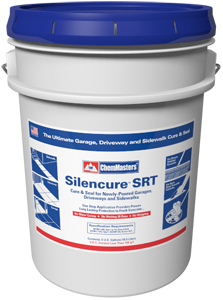 Silencure SRT
Silencure SRT
Low VOC, Acrylic Curing & Sealing Compound with Silane
Silencure™ SRT is a patented pure acrylic copolymer curing and sealing compound for new concrete installations.
Silencure, Polyseal, Traz, Aquanil, Spall Guard, Chemisil, EZ Strip Cure, SafeSeal, Spray Film, DuraShield SRT, Slip Stop and Exposee are trademarks of ChemMasters, Inc. ChemMasters and Safe-Cure are registered trademarks of ChemMasters, Inc.
300 Edwards Street, Madison, Ohio 44057
Phone 440.428.2105 - 800.486.7866
Fax 440.428.7091
Silencure, Polyseal, Traz, Aquanil, Spall Guard, Chemisil, EZ Strip Cure, SafeSeal, Spray Film, DuraShield SRT, Slip Stop and Exposee are trademarks of ChemMasters, Inc. ChemMasters and Safe-Cure are registered trademarks of ChemMasters, Inc.

Phone 440.428.2105 - 800.486.7866
Fax 440.428.7091
ERISA Documents for Welfare Benefit Plan
